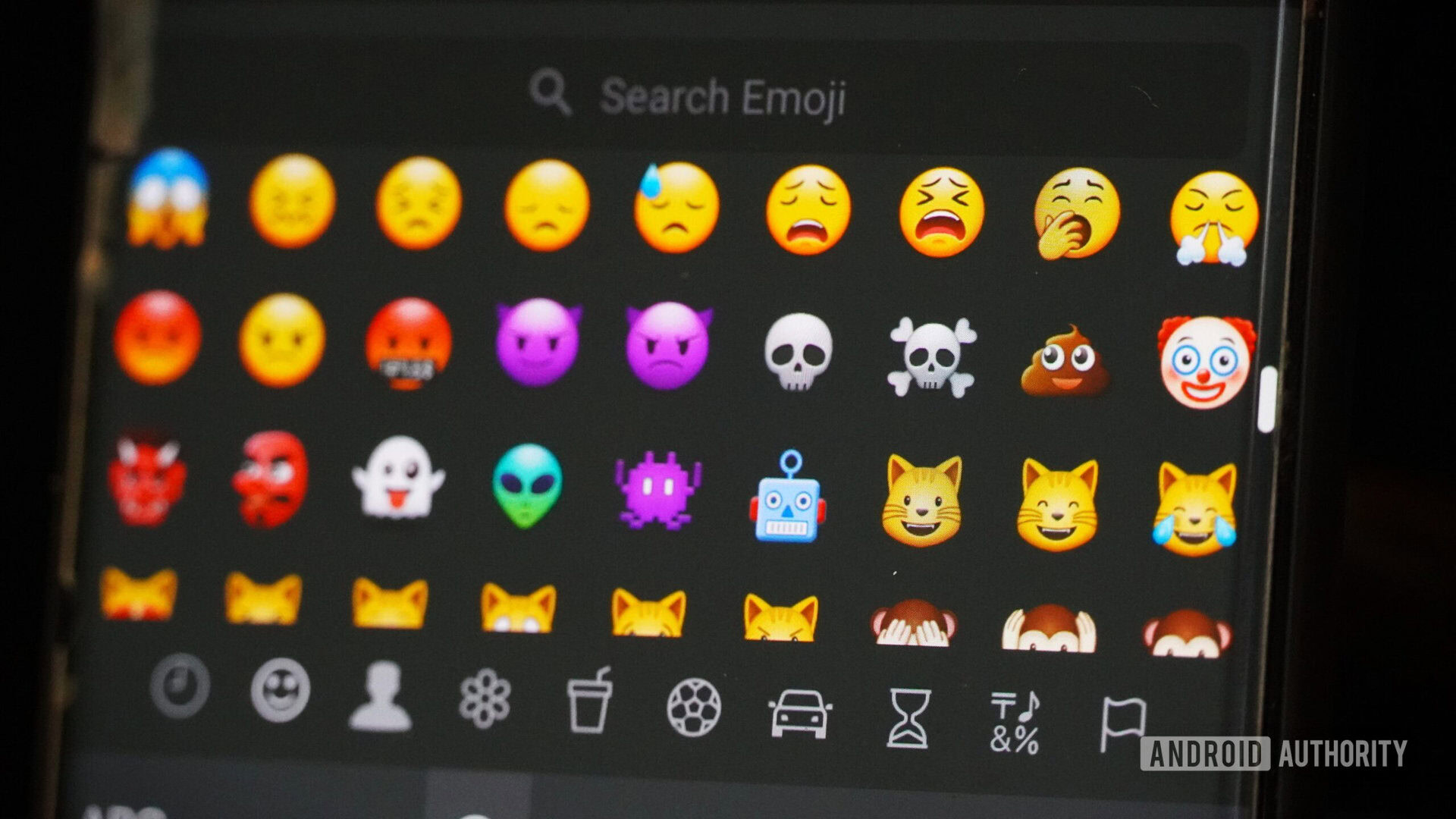Affiliate links on Android Authority may earn us a commission. Learn more.
What does the skull emoji 💀 mean?
Published onJune 16, 2024

If you frequently use social media or enjoy scrolling through the internet’s never-ending supply of emojis and memes, you’ve likely encountered the ubiquitous skull emoji 💀. But what does this iconic symbol mean? More than just a fun touch for the Halloween season, the skull emoji has come to convey several emotions in the digital lexicon. Here’s some context to help understand the diverse interpretations of the skull emoji.
QUICK ANSWER
The skull emoji 💀 typically symbolizes extreme emotions, such as dying of laughter or exhaustion, expressing awkwardness or embarrassment, in a hyperbolic and playful manner. However, it could also refer to death.
What does the skull emoji mean?
Despite its somewhat morbid appearance, the skull emoji doesn’t normally denote death or danger in the literal sense. Instead, it often expresses emotions ranging from uncontrollable laughter to sheer exhaustion. Here are a few use cases and examples to better understand how the skull emoji.
Died laughing
In many cases, the skull emoji is used as a reaction to convey the metaphor of dying of laughter. If a joke, video, or meme is so hysterically funny that you mind yourself struggling to breathe or type, the skull emoji is a quick way to communicate your state.
- Example: “I just watched that cat video you sent. 💀”
- This doesn’t mean the person has kicked the bucket. Instead, they’re saying they found the content incredibly amusing. The crying emoji is also an appropriate substitute.
Dead tired
Have you ever been so worn out that you felt you could drop dead? That’s another moment where the skull emoji shines. It’s an exaggerated way to express extreme exhaustion or fatigue, often after a long day of work, an intense workout, or even after studying for hours.
- Example: “Just finished a 10-hour shift at work. 💀”
- Again, no need to call an ambulance. The person is simply articulating their fatigue in a hyperbolic, lighthearted way.
“I’m gonna die” moments
The skull emoji also appears in moments when one feels in proverbial hot water. It can signify when someone anticipates a potentially negative reaction from another person or finds themselves in a sticky predicament.
- Examples: “Dropped my lunch tray in front of my crush in the cafeteria 💀,” or “Borrowed my brother’s car for a quick drive and scratched it. He’s going to kill me when he sees it.💀”
- In this context, the person is not literally fearing for their life. Instead, they’re expressing concern about the possible consequences of their actions, dramatizing the situation in a tongue-in-cheek manner using the skull emoji.
Feeling embarrassed
The skull emoji can also perfectly encapsulate those cringe-worthy moments when we wish the ground could swallow us up. It’s a way of saying we wish we could disappear from moments that are just too awkward or uncomfortable to bear. If you think the skull emoji is a little too morbid, you could also use the melting face emoji 🫠 to convey a similar feeling.
- Examples: “Dad picked me up at school blaring Backstreet Boys with the windows down 💀,” or “Walked into the wrong classroom, sat down, and didn’t realize until the lecture started. 💀”
- This doesn’t mean the individual is in mortal danger. Instead, they’re expressing their mortification in a playful and self-deprecating manner.
Showing anger or annoyance
Of course, we all have our limits, and sometimes we like to express our anger. We’re talking about those common “I wanna kill you!” moments we playfully use when someone is bothering us.
- Examples: “I just got your report card! 💀💀💀💀,” or “Is that a scratch I see on my ’68 Mustang?! 💀”
- Of course, no one is dying here, but there are definitely some real consequences on the table.
Appreciating someone’s beauty
We’ve also seen people using the skull emoji to express they really like how someone looks. We believe it may be linked to the expression that someone is “drop-dead gorgeous.”
- Example: “I saw your latest post! You look amazing! 💀💀💀”
- This could be casual or even used flirtatiously.
Death
Of course, the sender may also be referring to actual death, whether in a fun or serious manner.
- Example: “Did you watch the last Game of Thrones episode? Man, all my favorite characters keep dying! 💀”
- Of course, we picked a more lighthearted subject in this example, but a sender may also use it in a more serious tone. Using an emoji when talking about such a serious subject may be a bit distasteful, but some may still opt to use it. To each their own!
Overall, with its grim expression, the skull emoji has found a new lease of life in the digital universe. From death by laughter to sinking into the abyss of embarrassment, this icon has infused itself into our everyday vocabulary—a tribute to the irony of life, where even a skull can encapsulate countless emotions.
Of course, a big part of interpreting this emoji is analyzing the context of the conversation. You should be able to kind of “feel” what it means.
FAQs
The 💀 emoji, or the skull emoji, usually symbolizes a range of strong emotions, from laughter to exhaustion or embarrassment, in digital communication.
You can use the 💀 emoji on any digital platform where emojis are allowed, like social media posts, text messages, and emails, to express feelings in a humorous and dramatic way.
Use the 💀 emoji when you want to convey extreme emotions. For instance, when you find something amusing, when you’re extremely tired, or when you feel embarrassed or awkward.
Yes, people often use the 💀 emoji to show that something is so funny they are ‘dying of laughter.’